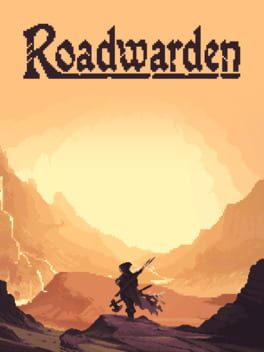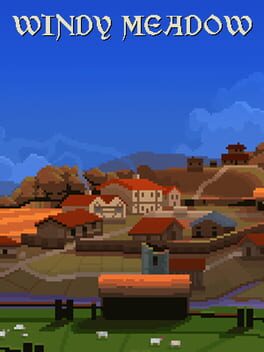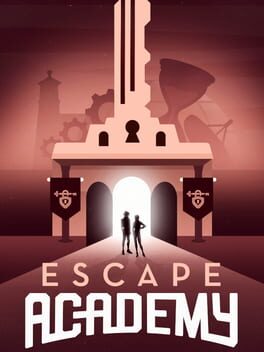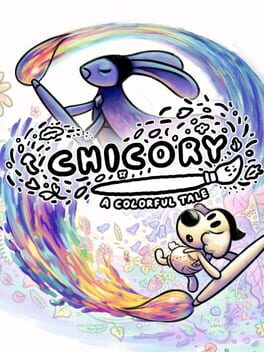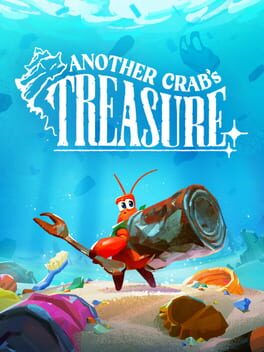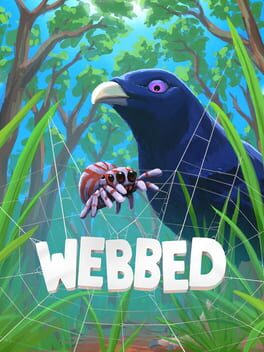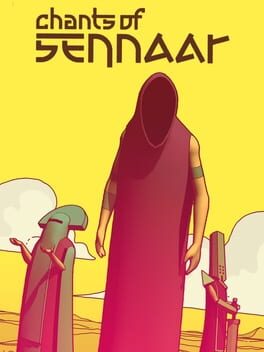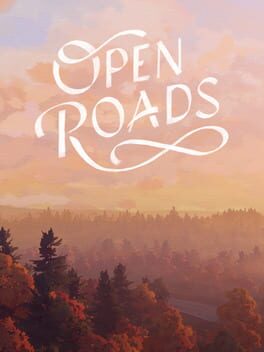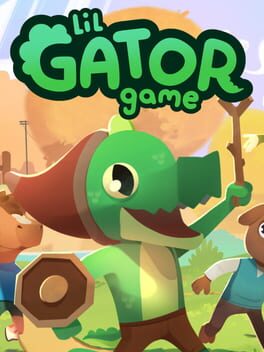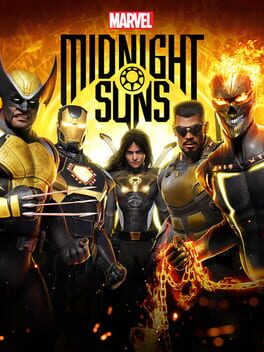Patteca
2022
Roadwarden reminds me a lot of the best parts of what I loved about Disco Elysium and Citizen Sleeper. The richness and diversity of characterizations in all three games makes their comparatively small game worlds feel deep and alive, filled with tons of uniquely memorable characters, and also notably empathetic without needing to be soft or cozy. Amazingly, Roadwarden pulls this off without even giving visual depictions of its characters, relying entirely on thoughtfully written text instead of the notably cool character portraits that Disco and Sleeper have.
Like those other two games, Roadwarden asks you to read a lot, but I’m glad to read as much in any game with similarly evocative detail and a selective word count; nothing ever feels like filler I’m tempted to skip through.
Beyond its great writing, the sparse acoustic soundtrack is beautiful in many different moods; I particularly loved the emotional impact of hearing an area’s background song change after one of the few transformational plot events occurs. The pixel graphic landscapes are just as smart as the writing in what they choose to include, and I love how exploration offers unfolding blankness as choices are made.
Like those other two games, Roadwarden asks you to read a lot, but I’m glad to read as much in any game with similarly evocative detail and a selective word count; nothing ever feels like filler I’m tempted to skip through.
Beyond its great writing, the sparse acoustic soundtrack is beautiful in many different moods; I particularly loved the emotional impact of hearing an area’s background song change after one of the few transformational plot events occurs. The pixel graphic landscapes are just as smart as the writing in what they choose to include, and I love how exploration offers unfolding blankness as choices are made.
The rudimentary pixel art characters and visual novel gameplay both initially risked scaring me off from playing this, but I’m glad they didn’t because this is some of the best character writing I’ve seen in a game in years. It tells the story of a few pivotal days in a rural fantasy village, offering three coming of age stories from three very different POVs during those days.
Those three POVs are where the magic lies, as each one offers a unique perception of all 30 people in the village. Their opinions aren’t paragraphs long lore entries full of Proper Nouns but instead a mere 2-3 sentences of personal experience, as if someone asked “hey what’s that guy’s deal?” The economical storytelling in most entries is “for sale: baby shoes, never worn”-level great, whether it offers thoughtful insight into the private humanity and inner life of another village member or maybe flatly dismisses someone for believably petty or circumstantial reasons. Through these, each person in the village is brought to life to be much more than just whatever trope they could easily exist as.
I was also a fan of the choices available for each POV. While all three have to make a big choice about their future in an “alternate end credits slides” kind of way, even more interesting is the smaller, seemingly non-branching decisions leading up to that. Just like in real life, most of their decisions don’t alter the broader world happening around them as much as how they’re going to feel about those happenings (and make those around them feel). They are not the one true protagonist but instead a single piece of a broader community they currently exist within. On a side note, I also loved how quietly inclusive it is without ever calling attention to it; as an example, the three POVs are respectively living with a visual disability, a double amputation, and neurodivergence. None are defined by those traits, though, even as they’re still clearly affected by them.
And while the character art isn’t immediately impressive, it grew more charming as I played, and the background scene art even more so. I also can’t give enough praise to the wistful poignancy of its instrumental acoustic guitar soundtrack.
Those three POVs are where the magic lies, as each one offers a unique perception of all 30 people in the village. Their opinions aren’t paragraphs long lore entries full of Proper Nouns but instead a mere 2-3 sentences of personal experience, as if someone asked “hey what’s that guy’s deal?” The economical storytelling in most entries is “for sale: baby shoes, never worn”-level great, whether it offers thoughtful insight into the private humanity and inner life of another village member or maybe flatly dismisses someone for believably petty or circumstantial reasons. Through these, each person in the village is brought to life to be much more than just whatever trope they could easily exist as.
I was also a fan of the choices available for each POV. While all three have to make a big choice about their future in an “alternate end credits slides” kind of way, even more interesting is the smaller, seemingly non-branching decisions leading up to that. Just like in real life, most of their decisions don’t alter the broader world happening around them as much as how they’re going to feel about those happenings (and make those around them feel). They are not the one true protagonist but instead a single piece of a broader community they currently exist within. On a side note, I also loved how quietly inclusive it is without ever calling attention to it; as an example, the three POVs are respectively living with a visual disability, a double amputation, and neurodivergence. None are defined by those traits, though, even as they’re still clearly affected by them.
And while the character art isn’t immediately impressive, it grew more charming as I played, and the background scene art even more so. I also can’t give enough praise to the wistful poignancy of its instrumental acoustic guitar soundtrack.
2022
I can’t think of many types of game I’m less interested in than puzzle games with a super foregrounded countdown timer. They’re generally more unpleasantly stressful than fun IMO, and this isn’t one of the few with a clever enough design to avoid that judgment.
I’d initially dismissed this game for the obvious reason that it looked like a “puzzle game with a super foregrounded countdown timer,” but I’d more recently heard that it’s worth playing for puzzle games fans in general and not just escape room fans. Nope, I had it right with the first impression, actually; gave this a few levels and it’s not for me.
I’d initially dismissed this game for the obvious reason that it looked like a “puzzle game with a super foregrounded countdown timer,” but I’d more recently heard that it’s worth playing for puzzle games fans in general and not just escape room fans. Nope, I had it right with the first impression, actually; gave this a few levels and it’s not for me.
I enjoyed the conscious artifice and light philosophical quandaries in the literary sub levels, and the diversity of genre settings they use. Each level efficiently evokes its setting in a way that feels familiar without feeling derivative, where I’d actually want to read a few of these books. And then the first person bridge sections and the overarching plot between book levels tie it all together satisfyingly.
I wasn’t initially sold on its cutesy vibes and clumsy controller painting, but then its insightful and heartwarming charm about the joy of creating started to shine through, while the controller painting “upgrades” let that part of gameplay start to shine as well. It’s still intentionally a bit clumsy after upgrades, but in a way that encourages as much player expression as desired and a consciously expressed absence of judgment or gatekeeping. If that sounds like a grab bag of needlessly clinical buzzwords, it doesn’t feel like that at all in action; it’s like a joyful magic trick that convinced me to color in my restaurant menu with the provided crayons.
The light platformer puzzling and innovative boss fights are great fun, too!
The light platformer puzzling and innovative boss fights are great fun, too!
A genuinely great and unique take on a Souls game, with surprisingly solid world-building and controls (two bits a lot of non-From Souls imitators seem to whiff on). It borrows a ton of proven Souls design ideas in its combat mechanics (especially in the skill tree) and its mischievous level design and enemy types, but hides it behind playfully pointed story and dialogue straight from a late 90s Rare platformer. It also seems to prove that difficulty in a Souls-like can be granularly manageable and still succeed (something I was previously unsure of), and its pistol approach to an instant win toggle is as clever as it is funny.
2021
A pleasantly bite-size metroidvania packed with charm and unique traversal mechanics, and supported by an impressively polished physics system. Being able to construct freeform webs that tense and sag dynamically is a lot of fun, and almost made me jealous that I’m not a spider. Each of the handful of quests pose unique problem types to solve, and each of the other insect civilizations recruited for help is entertainingly evoked. The final boss is sadly one of the weakest parts, but all in all this is a lot of fun.
2023
Great atmosphere and low-poly visuals, and the controls that make or break its gameplay loops feel great to control. Overall it’s a perfectly solid game that I’d recommend, and I thought both of its endings were neat, but I also felt a little like “that’s it?” as I realized its full extent. The compulsive multipart harvest-and-upgrade loops, the number of separate islands, and the expansive list of creatively imagined fish all give the impression that it’s a bigger game than it is. I’m fine with it not being any bigger, but I wish it was okay cutting some of the upgrade loop stuff that retroactively feels like filler, building up needlessly for content that’s not there.
2023
The deduction of icons feels perfectly balanced between not being too spelled out and not being too vague, and I love how each distinct culture is efficiently evoked through their language. Which concepts are core to their culture and common enough that you learn them first? How does their language frame concepts they share with other cultures (e.g. devotees vs impure ones)? Which concepts are so inessential that their language seems to omit them entirely?
Beyond the slow accumulation of understanding, I was impressed by the meta-challenge of forming cultural links, and the eventual ending sequence itself. A lot of similar games feel the need to have a big climactic gameplay sequence to drive home the combined emotion of the story and the full robustness of their puzzle design, but the difference with Chants of Sennarr is that it’s the rare example that actually imagines and executes it well, so I wasn’t distracted with frustration at any point.
Also, what a simple but visually stunning game.
Beyond the slow accumulation of understanding, I was impressed by the meta-challenge of forming cultural links, and the eventual ending sequence itself. A lot of similar games feel the need to have a big climactic gameplay sequence to drive home the combined emotion of the story and the full robustness of their puzzle design, but the difference with Chants of Sennarr is that it’s the rare example that actually imagines and executes it well, so I wasn’t distracted with frustration at any point.
Also, what a simple but visually stunning game.
I tried this out at the tail end of its Game Pass availability, thinking I’d try it and be able to drop it once it started feeling chore-like, and then I ended up hooked and buying it elsewhere once it left GP. The escalation of abilities to break down ships feels uniquely powerful, and the matching escalation of hazards and new ship types and variants keeps the process from getting stale. Similarly, figuring out time-saving shortcuts during breakdown routines feels incredibly satisfying, as does the iterative process of determining which cheap parts are more valuable to not salvage.
Other side activities bubble up as well, like pocketing assorted parts to fix up your own ship or decorate your HAB, or the ghost ships infested with troublesome AI nodes. There’s also a slapstick sense of comedy throughout when breakdown goes wrong, turning hasty disasters into laughs along with the encouragement to be more careful next time.
The labor rights story comes on a little strong at first, but that initial vibe ends up being fitting for the outgoing personality of the organizer. By its conclusion, it manages to be a relatively sophisticated sci-Fi dramatization of labor organizing with emotionally engaging stakes. The climactic industrial action is memorable for the story choices it offers and its clever gameplay twists.
Other side activities bubble up as well, like pocketing assorted parts to fix up your own ship or decorate your HAB, or the ghost ships infested with troublesome AI nodes. There’s also a slapstick sense of comedy throughout when breakdown goes wrong, turning hasty disasters into laughs along with the encouragement to be more careful next time.
The labor rights story comes on a little strong at first, but that initial vibe ends up being fitting for the outgoing personality of the organizer. By its conclusion, it manages to be a relatively sophisticated sci-Fi dramatization of labor organizing with emotionally engaging stakes. The climactic industrial action is memorable for the story choices it offers and its clever gameplay twists.
2024
Not quite as remarkable as Gone Home, but very similar and definitely recommended if you like the sort of game that does storytelling through finding personal artifacts while exploring domestic environments. The central mother-child relationship is relatable but not trope-y, and the uncovered family mystery has some genuine surprises that feel well-earned and believable.
I don’t know how likely a sequel is given this game’s rocky development, but I’d love one that included the aunt more, too. Her childhood Nightshade subplot was unexpectedly memorable.
One nagging complaint is I hated the amateurish implementation of camera lock-on for interactive objects. Just pop up the object name to let me know it’s there! I don’t need camera control wrested away, and it’s especially a nightmare when several small objects are close together.
I don’t know how likely a sequel is given this game’s rocky development, but I’d love one that included the aunt more, too. Her childhood Nightshade subplot was unexpectedly memorable.
One nagging complaint is I hated the amateurish implementation of camera lock-on for interactive objects. Just pop up the object name to let me know it’s there! I don’t need camera control wrested away, and it’s especially a nightmare when several small objects are close together.
2022
Completely charming. The writing is hilarious and feel good while avoiding schmaltz, reminding me a bit of the humor in Frog Detective except a little less “lol random.” It captures a child-like sense of play so well, with grown-up responsibility peeking through at times to ground it in a sense of reality.
It also bests Frog Detective for me by having gameplay that steers well clear of ever just being a tedious vehicle for its writing. Instead, it’s similar to A Short Hike’s concise distillation of Breath of the Wild’s open-world brilliance. Lil Gator Game is slightly less minimalist compared to A Short Hike, which I appreciated but wouldn’t say was strictly good or bad; overall its a pleasantly similar experience.
It also bests Frog Detective for me by having gameplay that steers well clear of ever just being a tedious vehicle for its writing. Instead, it’s similar to A Short Hike’s concise distillation of Breath of the Wild’s open-world brilliance. Lil Gator Game is slightly less minimalist compared to A Short Hike, which I appreciated but wouldn’t say was strictly good or bad; overall its a pleasantly similar experience.
2024
A bite size delight. The environmental deduction puzzling to figure out the conditions/ingredients needed to grow each plant is fun and intuitive enough, and the epistle storytelling thoughtfully documents a decades-long personal struggle against 19th Century misogyny (with a feel good conclusion that still avoids anachronism).
The Witness-like visuals are really attractive, though I noticed minor performance issues still present from the earlier demo, despite this not looking like a system-pusher. It’s not a huge deal and it’s definitely playable, but it’s noticeable throughout even as someone who doesn’t care at all about frame rates.
The Witness-like visuals are really attractive, though I noticed minor performance issues still present from the earlier demo, despite this not looking like a system-pusher. It’s not a huge deal and it’s definitely playable, but it’s noticeable throughout even as someone who doesn’t care at all about frame rates.
2021
I love how the XCom devs totally rethought turn-based squad tactics to fit the super-powered setting. Cover is gone, replaced by positioning incentivized by pinballing enemies into teammates and environmental hazards. Reliable skill choices with cooldowns are gone, replaced by a composite deck of cards built from any 3 heroes that reminded me a lot of Steamworld Quest’s similarly fun combat. The story missions seem to more consistently offer unique tweaks to the standard gameplay than XCom, and the Limbo training room and legendary solo challenges are a fun twist to get a better handle on each character’s strengths.
The strategy layer experimentation is less successful. As neat as the Haven base is at first, it quickly becomes a more tedious “menu presented as a map of locations to run between” that made me wish for the relative efficiency of XCom’s ant farm. There’s so many tedious little optional rotating chores between missions that seem like they must be vital, especially with the past context of urgency and efficiency-seeking XCom’s campaign requires, but most of it can be ignored. The absence of any mission clock to be raced against makes this explicit; you can play ten basic missions between every story mission if you want, and beyond your own level of patience there’s no real indication if you should race to the next story mission or farm more rewards between them. For a game that ends up eventually overstaying its welcome, I would have appreciated more genuine urgency and active discouragement from grinding between progression missions. There’s some charm to be found with after hours teammate interactions, but the conversation animations are so much worse and wooden compared to the very high bar set by AAA games at this level of fidelity. It’s another case where I wish they’d scaled back what they were doing if they couldn’t do it well at this level of expression/complexity.
Regardless of the time-wasting strategy layer issues, I still spent most of my time in tactics combat and thankfully that’s the part that’s great!
The strategy layer experimentation is less successful. As neat as the Haven base is at first, it quickly becomes a more tedious “menu presented as a map of locations to run between” that made me wish for the relative efficiency of XCom’s ant farm. There’s so many tedious little optional rotating chores between missions that seem like they must be vital, especially with the past context of urgency and efficiency-seeking XCom’s campaign requires, but most of it can be ignored. The absence of any mission clock to be raced against makes this explicit; you can play ten basic missions between every story mission if you want, and beyond your own level of patience there’s no real indication if you should race to the next story mission or farm more rewards between them. For a game that ends up eventually overstaying its welcome, I would have appreciated more genuine urgency and active discouragement from grinding between progression missions. There’s some charm to be found with after hours teammate interactions, but the conversation animations are so much worse and wooden compared to the very high bar set by AAA games at this level of fidelity. It’s another case where I wish they’d scaled back what they were doing if they couldn’t do it well at this level of expression/complexity.
Regardless of the time-wasting strategy layer issues, I still spent most of my time in tactics combat and thankfully that’s the part that’s great!
